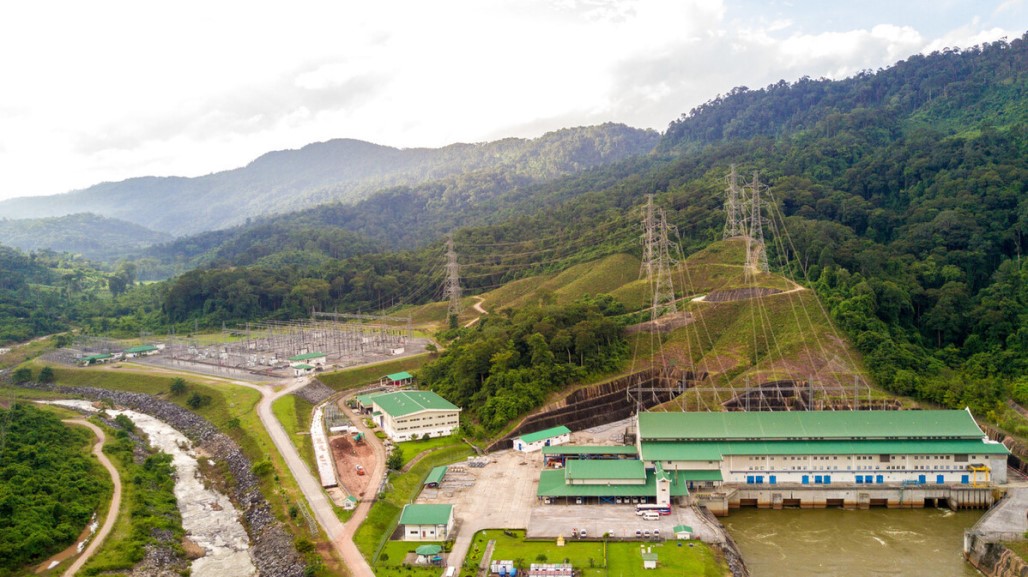
Southeast Asia’s energy ministers have called for greater interconnectivity in the region through the expansion of the ASEAN Power Grid and the Trans-ASEAN Gas Pipeline, which includes liquefied natural gas (LNG) infrastructure. The ministers from the 10 member states welcomed the planned Brunei Darussalam-Indonesia-Malaysia-Philippines Power Integration Project (BIMP-PIP) as a potential multilateral power trading project and urged other member states to initiate similar projects.
On 24 August, the 41st ASEAN Ministers on Energy Meeting (AMEM) in Indonesia adopted the “Joint Declaration of the 41st AMEM on Sustainable Energy Security Through Interconnectivity” in line with the aspirational regional target for interconnection by 2045.
Interconnecting national power systems to enable power trade is a key strategy of ASEAN to strengthen energy security and shift to renewables through efficient resource sharing. Along with market integration, it is seen as a critical component of a just and inclusive energy transition and for ensuring resilience and stability in the power grid and energy supply chains.
Abundant renewable resources
Minister of Energy and Mineral Resources Arifin Tasrif of Indonesia, who chaired the meeting, said energy demand in Southeast Asia’s rapidly growing economies is increasing by 3% annually, and two-thirds of the energy demand could be met by renewables.
ASEAN, including the BIMP-EAGA subregion, has abundant energy resources. Its renewable resources include natural gas, hydropower, solar, biomass, wind, and geothermal energy.
The ministers supported the idea of establishing sustainable regional supply chains for solar, wind, geothermal, hydro, bioenergy, waste-to-energy, marine renewable energy, and energy storage systems to accelerate the energy transition in the region.
They also talked about the important role of natural gas in a well-balanced and just energy transition. They noted the progress made in expanding the region’s gas distribution network through the development of new regasification terminals to connect and supply at least eight member states by 2025. According to a BMI report, the Philippines is building the largest number of LNG terminals this year. The region’s growing LNG infrastructure also includes LNG bunkering and small-scale LNG distribution networks.
The Trans-ASEAN Gas Pipeline is key to the creation of a common gas market, which is expected to “increase the security of natural gas supply, reduce carbon emissions, and inject competition into the regional gas market,” according to a policy brief from the ASEAN Center for Energy.
Integrating renewables into a smart grid
The expanded ASEAN Power Grid is envisioned as “a digitized transmission network where renewable energy supply can be channeled to support the regional demand.”
The multidonor Energy Transition Partnership (ETP) is supporting the ASEAN Center for Energy through the ASEAN Power Grid Program, which will provide a framework and roadmap for establishing a viable, flexible smart grid and mutlicountry power trading.
The Clean Affordable Secure Energy (CASE), the United Nations Economic and Social Commission for Asia and the Pacific (ESCAP) and the United States Agency for International Development (USAID) are also involved in the program, providing technical and financial assistance. Among the outputs of the program is the implementation of a multilateral power trade pilot project.
In the meantime, USAID’s Smart Power Program will support the feasibility study of the BIMP-PIP. The $40 million program is mobilizing $2 billion in blended financing for clean energy projects in Southeast Asia, which include strengthening energy trade and integration.
Model for multilateral power trade
At the meeting, the energy ministers noted the progress made by the Lao People’s Democratic Republic-Thailand-Malaysia-Singapore Power Integration Project (LTMS-PIP) and the collaboration on cross-border electricity trading between Cambodia and Singapore via subsea cables.
The transmission of renewable energy to Singapore from the Lao PDR via Thailand and Malaysia started in June 2022, marking a milestone in cross-border electricity trade in ASEAN. LTMS-PIP serves as the region’s pilot in addressing technical, legal and financial issues of multilateral electricity trade. It can supply up to 100 megawatts (MW) of hydropower from the Lao PDR. Initially, the power was being delivered only to Malaysia, but it is now being supplied to Singapore too.
The ministers also said there are bilateral interconnections that will make the transfer of electricity across borders possible for eight member states. They encouraged the countries to bridge gaps in the ASEAN Power Grid by linking the north, south, and east subregions based on the recommendations of the ASEAN Interconnection Masterplan Study III. The study provides an updated plan of the regional transmission network and for maximizing the use of the region’s renewable energy resources.
In BIMP-EAGA, interconnection projects that support the ASEAN Power Grid include the Trans-Borneo Power Grid Sarawak–West Kalimantan Interconnection Project, which was commissioned and energized in January 2016. The project built a 275-kilovolt grid-to-grid transmission line between Sarawak in Malaysia and West Kalimantan in Indonesia on the island of Borneo. The Sabah–Sarawak Power Interconnection Power Exchange Agreement between SESCO, a subsidiary of Sarawak Energy Bhd, and Sabah Electricity Sdn Bhd paves the way for establishing the Borneo Grid as well as the ASEAN Power Grid.
The ministers also affirmed low-carbon strategies for the energy sector, such as connecting green infrastructure and markets, tapping green capital, and developing interoperable carbon markets. They hailed the Renewable Energy Certificate System in BIMP-EAGA Countries Project (RECAP) of the ASEAN Centre for Energy. Backed by the BIMP-EAGA-ROK Cooperation Fund (BKCF), the study examines the market potential of tradeable renewable energy certificates in increasing clean energy investments in the four BIMP-EAGA countries. The ministers underscored that transition financing is crucial to implementing the region’s strategy for carbon neutrality. They noted the potential replication of RECAP in other ASEAN member states.
This article was first published by BIMP-EAGA on 5 September 2023.

